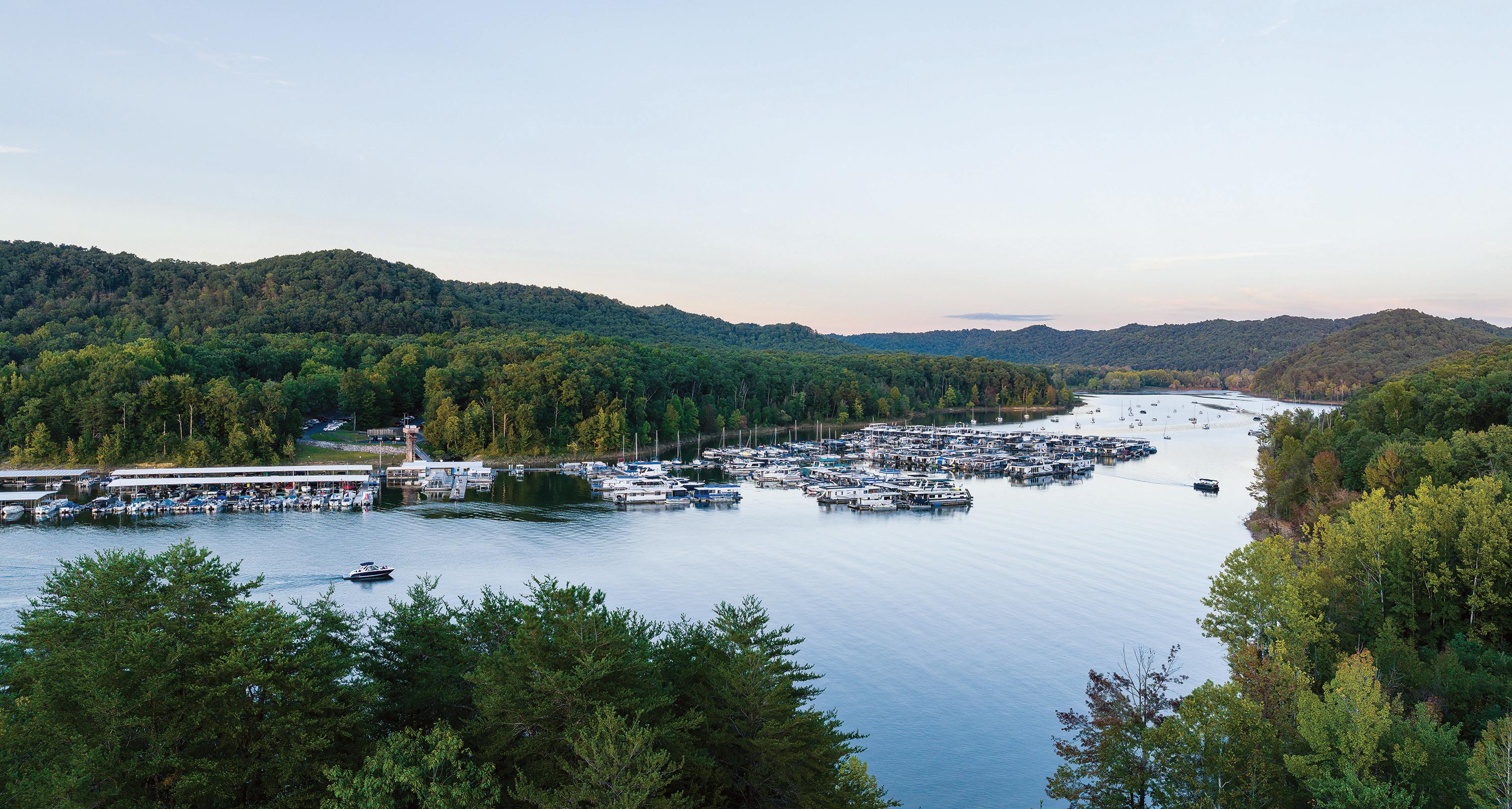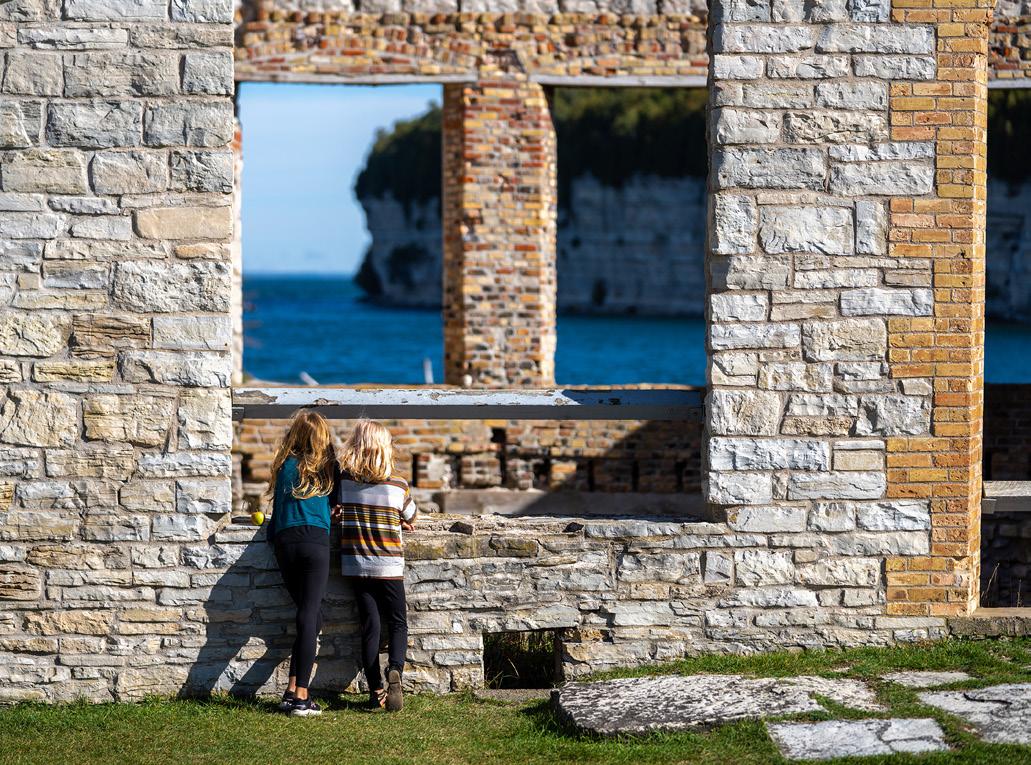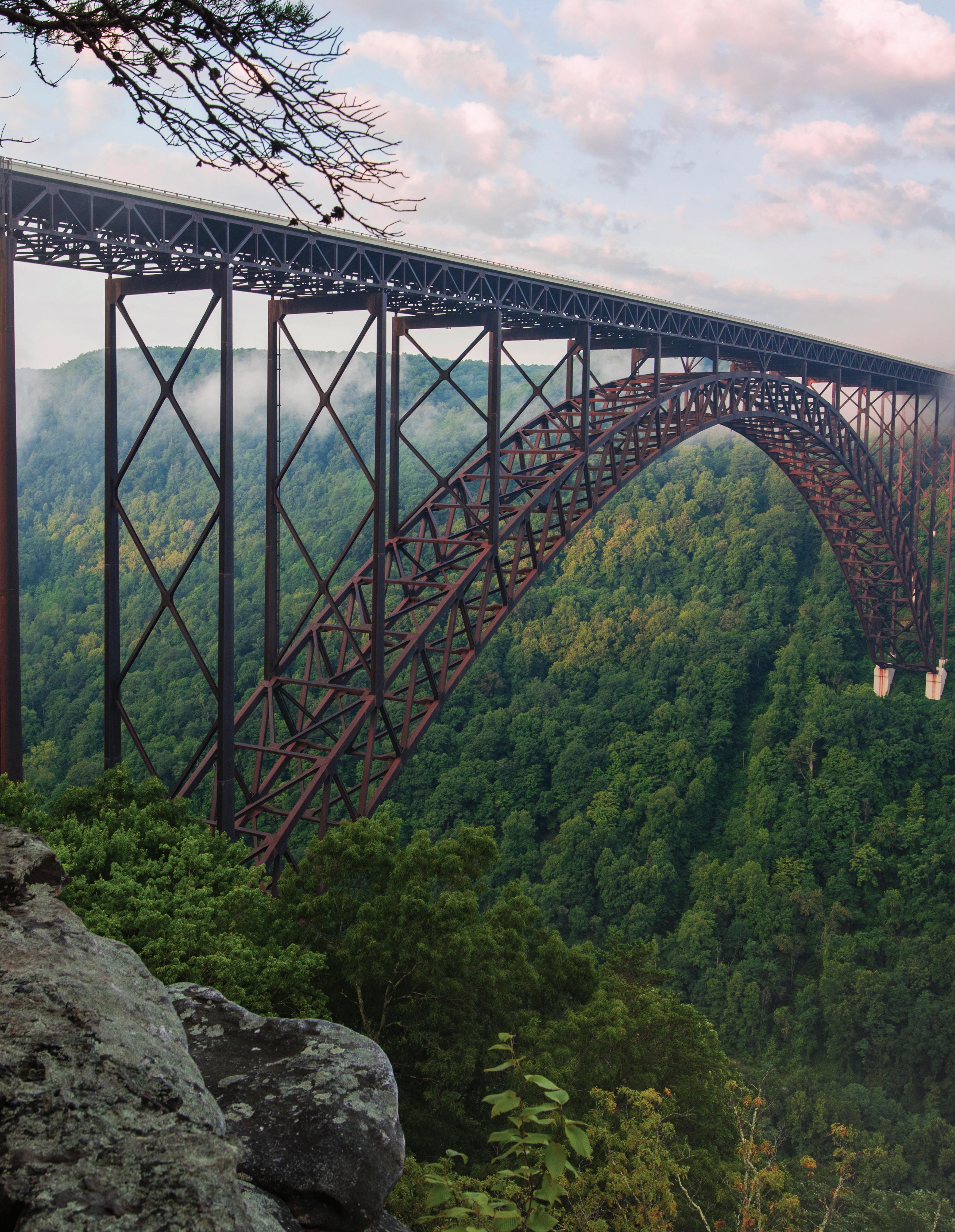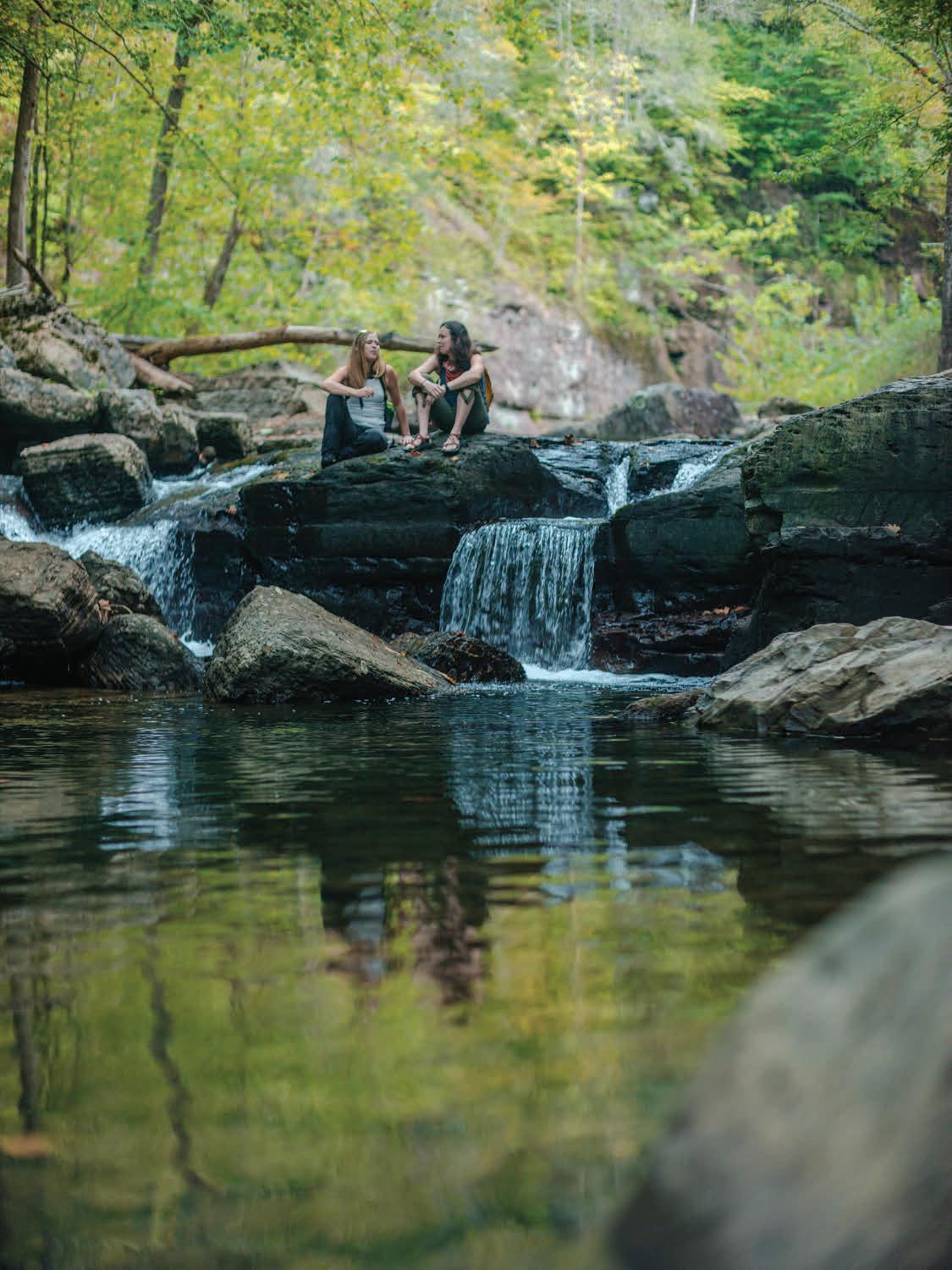
3 minute read
Lake Life
CAVE RUN LAKE WINCHESTER, KENTUCKY
Spanning three counties in northeastern Kentucky, the Cumberland District of Daniel Boone National Forest is home to Cave Run Lake, an 8,000-surface-acre expanse of fresh, clear water that offers some of the state’s best waterfront recreation.
Boaters looking to head out on the lake often travel to the Cumberland Ranger District Office, located off state Route 801, which has access points to the water and hiking trails in the surrounding forest, including the Sheltowee Trace National Recreation Trail.
The lake attracts visitors for boating, kayaking, sailing and swimming, with the Scott Creek Marina offering houseboat, pontoon and paddleboat rentals. Picnic areas make for an inviting lunch along the water, and two sand beaches provide places to swim. Because Cave Run Lake is known as a hot spot for muskie fishing, anglers travel to this part of Kentucky to cast their lines along the lake’s northern shore, just outside the city of Morehead.
Those looking to get away from the water can hit the trail on foot, mountain bike or horseback. The 7-mile Buckskin Trail is open to mountain bikers and hikers looking for a route that follows the shoreline. Travelers on horseback can enjoy more than 6 miles of lakeshore views from the Caney Trail.
Camping is one of the best ways to get the full Cave Run Lake experience. Hook up your RV or pitch a tent at one of Twin Knob Campground’s 200 sites. The 700-acre campground also has a store where travelers can purchase necessities like food and ice. The smaller Zilpo Campground offers 350 acres for tents and RVs, as well as rental cabins for parties of up to seven. If camping is not for you, the city of Morehead has lodging options, including commercial motels and cabin rentals with views of towering trees and distant mountaintops. (Cumberland Ranger District Office) 12375 KY-801, Morehead, Kentucky 40351, 606/784-6428; for more information, visit fs.usda.gov/dbnf — GRACIE WILSON
Time Traveling
Fayette Historic State Park sits along the southern side of Michigan’s Upper Peninsula in an area known as Big Bay de Noc. The scenic landmark covers 711 acres, is accessible by car or boat and lets visitors step back in time to explore the site of what was once a booming industrial community.
During the 19th century, the town of Fayette produced pig-iron ingots that were integral to the development of railroads and steel. Fayette Brown, a then-agent for Cleveland’s Jackson Iron Co., chose the site for its unmatched natural resources. Wood from the town’s surrounding forests was burned to fuel furnaces, while dolomite from the bordering white limestone cliffs purified the iron ore that would be transported through the harbor.
Although the Jackson Iron Co. halted its smelting business in 1891, this industrial town’s story survived after the state of Michigan acquired the site in 1959. The white limestone cliffs, while closed to the public, hold what are believed to be 1,400-year-old cedar trees, making this Michigan state park home to one of the nation’s oldest living forests. Today, visitors can admire 20 preserved structures that tell the story of Fayette, including a hotel, machine shop and town hall. Travelers can also walk through an enormous blast furnace complex that once fueled the town’s iron-smelting operation (except the sections that still have remnants from the last time the furnace was fired in 1891). History buffs can enhance their experience with a trip to the park’s visitor center or by scheduling a guided tour, available mid-June through August.
Those travelling by boat can dock at the marina equipped with 15 transient slips. On-site amenities like picnic tables and access to restrooms and showers make for an ideal day trip or camping overnight. 4785 II Rd., Garden, Michigan 49835, 906/644-2603, michigandnr.com/parksandtrails — BROOKE McCAFFREY

Island Time MIDDLE BASS ISLAND, OHIO
Middle Bass Island sits in Lake Erie’s western basin, just a 40-minute ride on the Miller Ferry from Port Clinton. With only three restaurants and a coffee shop, it’s a quiet alternative to its neighbor South Bass Island and the summer revelry that accompanies a trip to Put-in-Bay.

As the ferry nears the dock, the iconic Lonz Winery comes into view. The historic structure, which has been the island’s most recognizable feature since 1866, is part of Middle Bass Island State Park. The restored building displays exhibits in the wine cellar where visitors can see artifacts from the property and learn how wine was made here.

From there, visitors can rent a kayak or bicycle at Middle Bass State Park Marina and paddle along the island’s shoreline to take in views of quaint cottages, migratory birds and neighboring islands. Those who want to delve deeper into nature can visit the walking trails at East Point Preserve or the Forested Wetland Preserve. Bird-watchers frequent Petersen’s
Woods to look for eagles, which have nested there in the past.

After a morning of exploring, refuel with a specialty pizza or sandwich from Uncle Joe’s Pizza at the Middle Bass General Store. While there, you can also pick up any necessities, from snacks to island souvenirs. Travelers looking to take it easy can spend an afternoon at J.F. Walleye’s family-friendly wading pool. If you stick around for dinner, try the restaurant’s namesake walleye bites.

Those looking for nightlife as afternoon stretches into evening can find it at Middle Bass Island’s tiki-themed resort, St. Hazard’s, where live music and drinks by the pool are a great complement to island sunsets. For travelers who want to make more than a day of it, Middle Bass Island has a range of accommodations, from primitive camping to home rentals. For more information, visit ohiodnr.gov, shoresandislands.com and millerferry.com.
— KRISTINA SMITH










